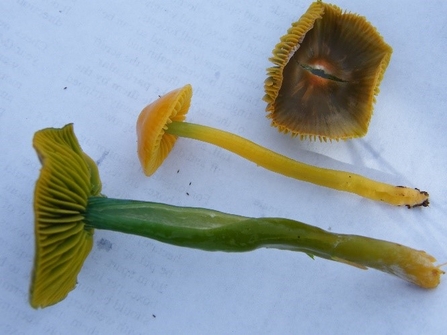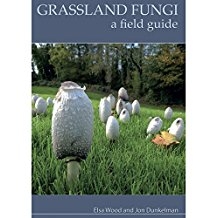They too exist in many different shapes, colours and perfumes or odours. This is particularly true of waxcap fungi.
Waxcap fungi, are the jewels of the fungi world and are found in many different colours; pink, red, orange, yellow and green. There are about 40 species of waxcap in the UK; being the home of half the world’s population of this species. Waxcaps were once common in our meadows, but do not tolerate the use of chemical fertilisers, therefore their presence is an indication of high quality unimproved grassland habitat.
Waxcaps are good biological indicators because they are affected by many factors including chemical input, air pollution, and habitat change including the growth of tall vegetation (a change in grazing regime), and the invasion of woody species.
They are thought to exist in grassland that is low in phosphates and sulphur and contains moss. The species of waxcaps you encounter will depend on the habitat in which they are growing; some species are not found on neutral grasslands or meadows, but prefer acidic soils and are found on heathland; such as the Heath Waxcap (Gliophorus laetus), and the Vermillion Waxcap. Churchyards and domestic lawns are very often important sites for grassland fungi because of the grass cutting regime employed on these sites.



